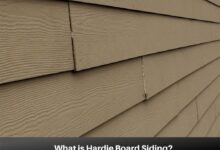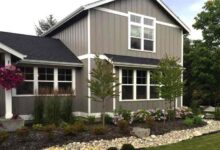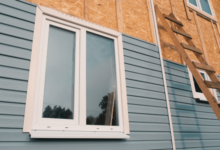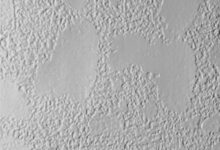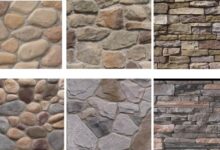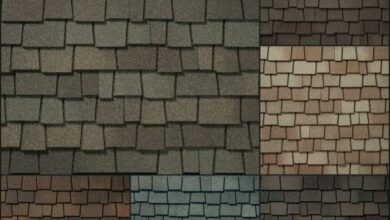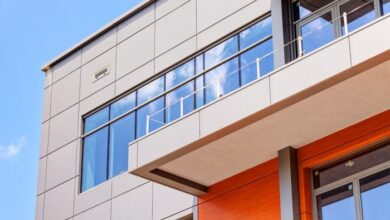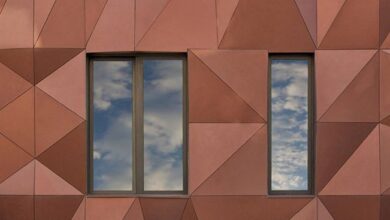Tando Siding A Complete Guide
Tando siding: It’s not just another exterior cladding; it’s a statement. This comprehensive guide dives deep into everything you need to know about Tando siding, from its unique material composition and surprisingly simple installation process to its long-term cost benefits and surprisingly eco-friendly manufacturing. We’ll explore the various styles and colors, helping you choose the perfect look for your home, and address common questions to ensure you’re fully informed before taking the plunge. Get ready to discover why Tando siding is quickly becoming a top choice for homeowners.
We’ll cover everything from material properties and installation techniques to cost considerations and environmental impact, equipping you with the knowledge to make an informed decision. Whether you’re a seasoned DIYer or working with a contractor, this guide will serve as your ultimate resource for understanding and utilizing Tando siding.
Tando Siding

Tando siding offers a compelling alternative to traditional siding materials, boasting a unique blend of aesthetics and performance. Understanding its composition, manufacturing process, and durability is crucial for homeowners and contractors alike considering this option for their next project. This section delves into the specifics of Tando siding, providing a comprehensive overview of its properties and how it stacks up against the competition.
Tando Siding Material Composition
Tando siding is primarily composed of recycled wood fiber and polymer materials. This blend creates a composite material that’s both lightweight and remarkably strong. The exact formulation varies depending on the specific Tando product line (e.g., TandoStone, TandoShake), but the core principle remains consistent: a durable, weather-resistant composite designed to mimic the look of natural materials. The polymers contribute to the siding’s resistance to moisture, insects, and rot, while the wood fiber adds texture and a natural aesthetic appeal. This unique composition is a key differentiator compared to purely plastic or cement-based siding options.
Tando Siding Manufacturing Process
The manufacturing process involves several key steps. First, the recycled wood fiber is mixed with polymer resins. This mixture is then carefully formulated to achieve the desired density, texture, and color. The resulting composite material is then molded into the desired shapes—be it planks, shakes, or other profiles—using high-pressure molding techniques. Finally, the molded siding undergoes a finishing process, which may include painting, texturing, or other surface treatments to enhance its appearance and durability. This precise manufacturing process contributes to the consistent quality and performance of Tando siding products.
Tando Siding Durability Compared to Other Siding Materials
Tando siding boasts superior durability compared to some traditional siding options. Unlike wood, it’s highly resistant to rot, insect infestation, and warping. Compared to vinyl siding, Tando generally offers greater impact resistance and a more realistic wood-like appearance. While fiber cement siding offers excellent durability, Tando often presents a lighter weight and easier installation process. The longevity of Tando siding is influenced by factors such as proper installation and regional climate conditions, but it generally outperforms vinyl in terms of long-term resilience and surpasses wood in terms of maintenance requirements. Independent testing and real-world applications have demonstrated its ability to withstand harsh weather conditions for many years.
Tando Siding Maintenance Requirements
Tando siding requires minimal maintenance compared to other siding materials. Unlike wood siding, which requires regular painting and staining, Tando siding’s color is infused into the material, making it resistant to fading and peeling. Periodic cleaning with water and a mild detergent is typically sufficient to maintain its appearance. However, severe damage from impact or extreme weather events may require localized repairs. The low-maintenance nature of Tando siding is a significant advantage, saving homeowners both time and money in the long run.
Tando Siding Weather Resistance
| Weather Element | Sun Exposure | Rain Resistance | Snow Resistance | Wind Resistance |
|---|---|---|---|---|
| Resistance Level | High – Color is infused, resists fading | Excellent – Moisture resistant composite | Good – Durable enough to withstand snow loads | Good – Designed to withstand high winds, depending on installation |
Tando Siding Installation
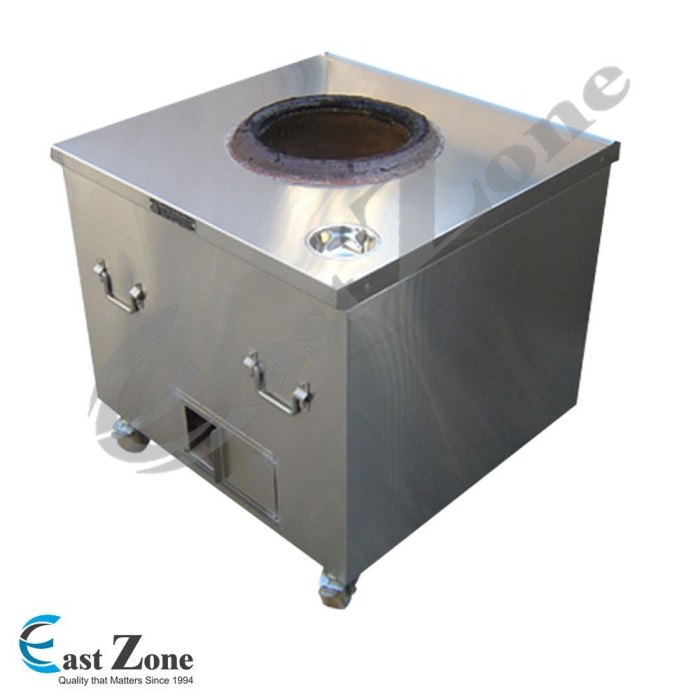
Tando siding offers a durable and attractive alternative to traditional wood or vinyl siding. Its composite material boasts resistance to rot, insects, and fading, making it a low-maintenance choice for homeowners. However, proper installation is crucial to ensure the longevity and aesthetic appeal of your Tando siding. This guide provides a step-by-step process, along with essential tools and techniques, to help you achieve a professional-looking finish.
Tando Siding Installation Process
The Tando siding installation process involves several key steps, each requiring precision and attention to detail. Following these steps meticulously will ensure a long-lasting, beautiful, and properly functioning siding system.
- Surface Preparation: Thoroughly clean the existing wall surface, removing any loose debris, dirt, or old siding. Repair any damaged areas of the underlying sheathing or wall structure. Ensure the surface is level and free of imperfections that could compromise the siding’s integrity. This step is crucial for a smooth and even installation.
- Starter Strip Installation: Install the starter strip along the bottom edge of the wall, ensuring it’s level and aligned. This strip provides a foundation for the remaining siding panels and maintains consistent spacing.
- Panel Installation: Begin installing the Tando siding panels from the bottom, working your way up. Each panel should overlap the previous one, ensuring a tight, weather-resistant seal. Use appropriate fasteners and follow the manufacturer’s recommended spacing.
- Corner and J-Channel Installation: Install corner and J-channel pieces to provide a clean finish at corners and around windows and doors. These pieces protect the edges of the siding and enhance the overall aesthetic appeal.
- Finishing Touches: Once all panels are installed, inspect the entire surface for any gaps or inconsistencies. Make necessary adjustments and apply any required caulking or sealant to ensure a watertight seal. This final inspection guarantees a long-lasting, well-protected exterior.
Tools Required for Tando Siding Installation
Having the right tools significantly improves efficiency and ensures a quality installation. Below is a visual representation and description of essential tools. (Note: This is a textual description; a visual representation would be beneficial but is beyond the scope of this text-based response).
| Tool | Description and Function |
|---|---|
| Measuring Tape | Accurate measurements are critical for proper panel alignment and cutting. |
| Level | Ensures that the starter strip and each siding panel are installed level and plumb, preventing sagging or unevenness. |
| Circular Saw with Fine-Tooth Blade | Precisely cuts Tando siding panels to size, accommodating windows, doors, and corners. |
| Hammer | Used to drive nails or staples securely into the siding, ensuring a strong hold. |
| Safety Glasses | Protect your eyes from flying debris during cutting and installation. |
| Work Gloves | Protect your hands from splinters and sharp edges. |
| Caulk Gun | Applies sealant to ensure a watertight seal around windows, doors, and other areas. |
Surface Preparation Best Practices
Proper surface preparation is paramount for successful Tando siding installation. Failing to adequately prepare the surface can lead to problems such as uneven siding, poor adhesion, and premature failure. This involves removing all loose materials, repairing damaged areas, and ensuring a clean, dry, and level surface. This foundational step ensures the long-term performance and aesthetic quality of the Tando siding.
Common Challenges and Solutions During Tando Siding Installation
Several common challenges can arise during Tando siding installation. Understanding these challenges and their solutions is crucial for a smooth and efficient process. For instance, uneven surfaces can be addressed through the use of shims. Improper cutting can be rectified by using a sharp blade and following manufacturer guidelines. Problems with panel alignment are typically solved through careful measurement and attention to detail. Proactive planning and meticulous execution will minimize these challenges.
Tando Siding
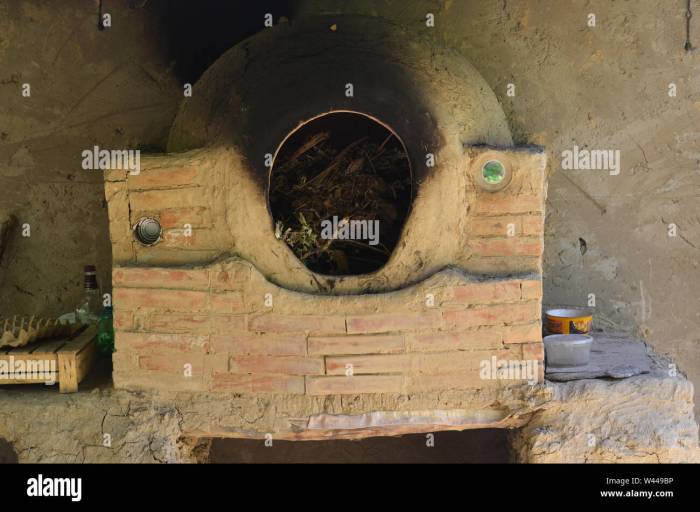
Tando siding offers a compelling alternative to traditional materials, boasting a unique blend of durability, style, and low-maintenance appeal. Its composite nature provides exceptional resistance to the elements, while its diverse range of styles and colors allows for seamless integration with various architectural designs. This exploration delves into the specifics of Tando’s offerings, showcasing their versatility and aesthetic impact.
Tando Siding Styles and Color Availability
Tando siding is available in several distinct styles, each designed to evoke a particular aesthetic. The most popular styles include the rustic charm of TandoStone, mimicking the look of natural stone; the clean lines and contemporary appeal of TandoShake, replicating the texture of wood shakes; and the classic elegance of TandoBoard & Batten, offering a traditional clapboard profile. These styles are further enhanced by a wide spectrum of color options, ranging from subtle neutrals to bold, vibrant hues. The color palettes are carefully curated to complement various architectural styles and personal preferences.
Tando Siding Styles and Architectural Design Compatibility
The versatility of Tando siding allows it to complement a wide range of architectural styles. For instance, the TandoStone style, with its textured surface and natural color variations, pairs beautifully with rustic, craftsman, and mountain-style homes. Its rugged texture adds depth and character to these architectural styles. Conversely, the sleek, modern lines of TandoShake are ideal for contemporary or minimalist designs. The clean lines and consistent profile create a sense of sophistication and simplicity. TandoBoard & Batten, with its traditional clapboard profile, suits homes with more classic or colonial aesthetics, adding a timeless elegance to the facade. The adaptability of these styles makes Tando siding a versatile choice for a variety of homeowners.
Tando Siding Color Palettes and Coordinating Elements
Imagine a home clad in TandoStone in a warm “Harvest Wheat” hue. This light, earthy tone pairs perfectly with a dark brown roof, creating a visually appealing contrast. The trim could be painted a coordinating shade of brown, or a complementary darker grey to add subtle sophistication. Alternatively, consider a home featuring TandoShake in a deep “Coastal Gray.” This cool, sophisticated color works exceptionally well with a lighter grey or white roof, creating a balanced and modern look. White or light grey trim would further enhance this contemporary aesthetic. For a bolder statement, a home with TandoBoard & Batten in “Black Walnut” offers a dramatic, sophisticated look. This rich, dark brown complements lighter-colored roofs and trim, creating a striking visual contrast. The selection of coordinating roofing and trim colors can significantly enhance the overall aesthetic impact of Tando siding. The key is to create a balanced palette that complements the home’s architectural style and the homeowner’s personal taste.
Aesthetic Comparison to Other Siding Materials
Compared to traditional vinyl siding, Tando siding offers a superior aesthetic appeal. While vinyl can appear somewhat plastic and artificial, Tando’s composite materials provide a more realistic and natural look. The textures and color variations mimic natural materials such as wood and stone more convincingly. Compared to wood siding, Tando requires significantly less maintenance, eliminating the need for regular painting, staining, and caulking. This translates to long-term cost savings and reduced upkeep. The durability of Tando siding also surpasses that of wood, making it a more resilient and long-lasting option. It is also a more environmentally friendly choice compared to vinyl due to its recycled content.
Tando Siding Color Options and Maintenance Considerations
| Color Option | Style | Maintenance | Notes |
|---|---|---|---|
| Harvest Wheat | TandoStone | Low | Occasional cleaning with water and mild detergent. |
| Coastal Gray | TandoShake | Low | Regular cleaning to prevent dirt buildup. |
| Black Walnut | TandoBoard & Batten | Low | Minimal maintenance required; occasional spot cleaning. |
| Mountain Mist | TandoStone | Low | Similar to Harvest Wheat, requiring only occasional cleaning. |
Tando Siding Cost and Value
Tando siding, known for its durability and aesthetic appeal, presents a significant investment for homeowners. Understanding the cost factors, long-term benefits, and comparative pricing against other siding options is crucial for making an informed decision. This section delves into the financial aspects of Tando siding, exploring its value proposition and potential return on investment.
Factors Influencing Tando Siding Cost
Several factors contribute to the overall cost of Tando siding. The size of the area requiring siding is a primary determinant; larger homes naturally require more materials and labor. The complexity of the project also plays a role; homes with intricate architectural details or multiple levels will necessitate more time and expertise, increasing the cost. Material selection further influences pricing; premium Tando lines, featuring enhanced textures or colors, command higher prices than standard options. Finally, regional variations in labor rates and material availability can impact the final cost. A homeowner in a high-cost-of-living area can expect to pay more than someone in a region with lower labor and material costs.
Long-Term Cost Benefits of Tando Siding
Tando siding offers substantial long-term cost benefits. Its durability significantly reduces the need for frequent repairs and replacements, a common expense with other siding materials. The low-maintenance nature of Tando siding minimizes ongoing upkeep costs. Furthermore, Tando’s resistance to weather damage and pest infestation translates to fewer costly repairs over the siding’s lifespan. The product’s warranty also provides added financial security, protecting against unforeseen manufacturing defects. For example, a homeowner might save thousands of dollars over 20 years by avoiding the recurring costs associated with repainting or repairing traditional wood or vinyl siding.
Tando Siding Price Compared to Other Options
While Tando siding represents a premium option, its long-term value proposition often surpasses the initial investment cost. Compared to traditional wood siding, which requires regular maintenance and repainting, Tando offers a lower total cost of ownership over its lifetime. Vinyl siding, a more budget-friendly alternative, often lacks the durability and aesthetic appeal of Tando. Fiber cement siding, another competitor, shares some of Tando’s durability but can be more expensive. Ultimately, a comprehensive cost-benefit analysis considering material cost, installation expenses, maintenance requirements, and lifespan is crucial when comparing Tando to other siding options. The higher upfront cost of Tando often translates into significant savings over the long run.
Tando Siding’s Impact on Property Value
Tando siding can significantly enhance a property’s curb appeal and market value. Its modern aesthetics and superior durability appeal to potential buyers, making a home more attractive and competitive in the real estate market. A well-maintained home with high-quality siding, such as Tando, is often perceived as a better investment, commanding a higher sale price. For instance, a recent appraisal might show a higher valuation for a home with Tando siding compared to a similar property with less durable or aesthetically pleasing siding. This increase in value can outweigh the initial investment cost, offering a strong return on investment for homeowners.
Tando Siding Installation Cost Breakdown
The following table provides a sample breakdown of the costs associated with Tando siding installation. Note that these figures are estimates and can vary significantly depending on the factors discussed earlier.
| Cost Category | Percentage of Total Cost | Example Cost (USD) | Notes |
|---|---|---|---|
| Materials (Tando Siding) | 40-50% | $8,000 – $10,000 | Varies based on house size and siding type |
| Labor (Installation) | 40-50% | $8,000 – $10,000 | Depends on labor rates in the region and project complexity |
| Permits and Inspections | 5-10% | $1,000 – $2,000 | Required by local authorities |
| Waste Removal | 5-10% | $1,000 – $2,000 | Cost of disposing of old siding and construction debris |
Tando Siding
Tando siding offers a durable and aesthetically pleasing exterior cladding option for homes. However, understanding its environmental impact is crucial for environmentally conscious homeowners. This section delves into the sustainability aspects of Tando siding, examining its manufacturing process, comparing it to alternatives, and outlining its end-of-life management.
Tando Siding Material Sustainability
Tando siding primarily utilizes recycled materials in its manufacturing. A significant portion of their product line incorporates reclaimed wood fiber, reducing reliance on newly harvested timber and minimizing deforestation. The specific percentage of recycled content varies depending on the product line, but Tando actively promotes its commitment to sustainable sourcing and responsible manufacturing practices. This commitment extends to the use of low-VOC (Volatile Organic Compound) paints and finishes, minimizing harmful emissions during and after installation. Furthermore, the company invests in sustainable forestry practices and collaborates with suppliers who share their environmental values.
Manufacturing Process Environmental Impact
The manufacturing process of Tando siding involves several stages, each with its own environmental footprint. Energy consumption is a key factor, with the manufacturing facilities requiring substantial power to operate machinery and processes. Tando aims to mitigate this impact through the implementation of energy-efficient technologies and renewable energy sources where feasible. Waste generation is another aspect to consider. While Tando utilizes recycled materials, the production process still generates waste, including wood scraps and manufacturing byproducts. The company addresses this by implementing waste reduction strategies and recycling programs within its facilities, aiming to minimize landfill waste. Water usage is another important environmental consideration. The manufacturing process requires water for cleaning and other operational needs. Tando strives to optimize water usage through efficient water management systems and water recycling initiatives to reduce its overall water footprint.
Tando Siding vs. Other Siding Options
Comparing Tando siding’s environmental footprint to other common siding materials requires a multi-faceted approach. Compared to traditional vinyl siding, which is derived from petroleum, Tando siding offers a more sustainable alternative due to its use of recycled wood fiber. However, the manufacturing process for both still involves energy consumption and waste generation. Compared to wood siding, Tando offers potential advantages in terms of reduced deforestation and maintenance needs, thus potentially lowering the overall lifecycle environmental impact. However, the embodied energy in the manufacturing process of Tando siding needs to be considered in comparison to the embodied energy and lifecycle of natural wood siding. Finally, comparing Tando to composite siding reveals a trade-off: while both utilize recycled materials, the specific composition and manufacturing processes will vary, leading to differences in their environmental footprints. A comprehensive Life Cycle Assessment (LCA) would be needed for a precise comparison.
Tando Siding Recycling and Disposal
Tando siding’s recyclability and disposal options depend on local waste management infrastructure and the specific product line. Some components of Tando siding may be suitable for recycling in certain regions, while others may require disposal in landfills. It’s crucial for homeowners to check with their local waste management authorities to understand the appropriate disposal methods for their specific Tando siding products. Tando itself may offer specific recycling or take-back programs in certain areas. Homeowners should contact Tando directly or consult their local waste management facilities for detailed guidance on recycling or disposal options.
Environmental Aspects of Tando Siding
| Aspect | Description | Impact | Mitigation Strategies |
|---|---|---|---|
| Material Sourcing | Uses recycled wood fiber and other reclaimed materials. | Reduces reliance on virgin materials, lowering deforestation and resource depletion. | Continued sourcing of recycled materials and sustainable forestry partnerships. |
| Manufacturing Process | Involves energy consumption, water usage, and waste generation. | Contributes to greenhouse gas emissions and environmental pollution. | Energy efficiency improvements, water conservation, and waste reduction programs. |
| Product Lifecycle | Durable and long-lasting, reducing the need for frequent replacements. | Reduces the overall environmental impact compared to shorter-lived materials. | Continued product development focusing on durability and longevity. |
| End-of-Life Management | Recyclability varies depending on local infrastructure and product type. | Potential for landfill disposal if not recycled. | Collaboration with waste management facilities and development of recycling programs. |
From its durable composition and low-maintenance design to its wide array of styles and colors, Tando siding offers a compelling blend of aesthetics and practicality. Understanding the installation process, cost implications, and environmental considerations empowers you to make a confident choice that enhances your home’s curb appeal and long-term value. Ultimately, the decision to use Tando siding is about investing in quality, longevity, and a beautiful exterior that stands the test of time. So, are you ready to transform your home’s exterior?
Essential Questionnaire
What is the warranty on Tando siding?
Tando offers varying warranties depending on the specific product line. Check their website for details on the warranty for the siding you’re considering.
Can Tando siding be installed over existing siding?
In some cases, yes, but it depends on the condition of the existing siding and the specific Tando product. Professional consultation is recommended.
How often does Tando siding need to be cleaned?
Regular cleaning (once or twice a year) with water and a soft brush is usually sufficient. Avoid harsh chemicals.
Is Tando siding fire-resistant?
Tando siding meets or exceeds building codes for fire resistance. Specific ratings vary by product; consult the product specifications.
Does Tando siding fade over time?
While Tando siding is designed for colorfastness, some fading may occur over many years depending on sun exposure. The degree of fading varies by color.
